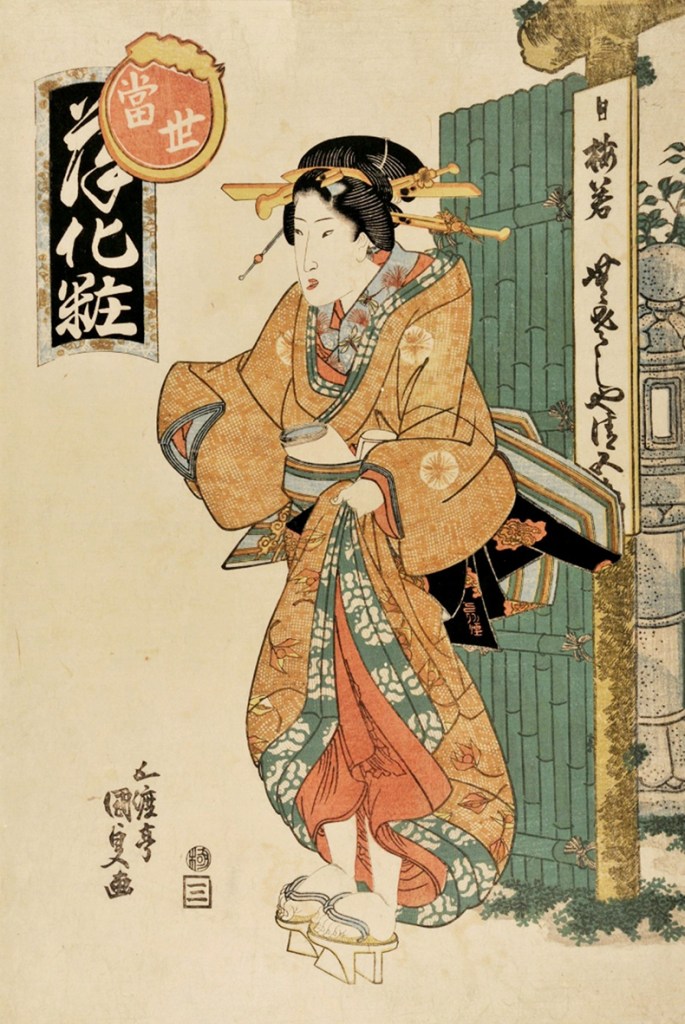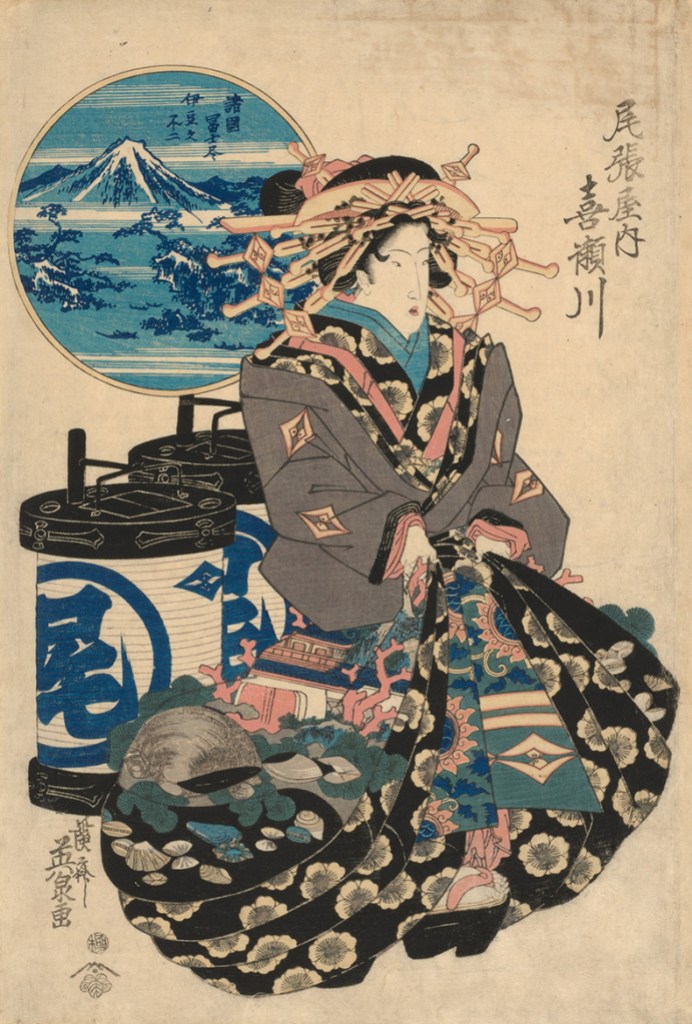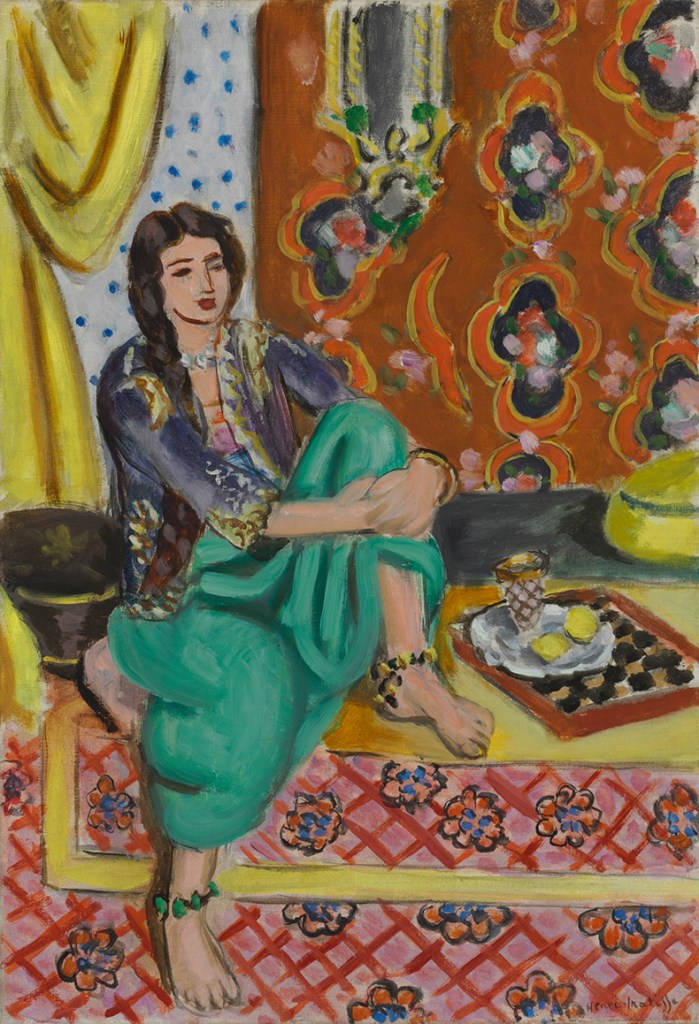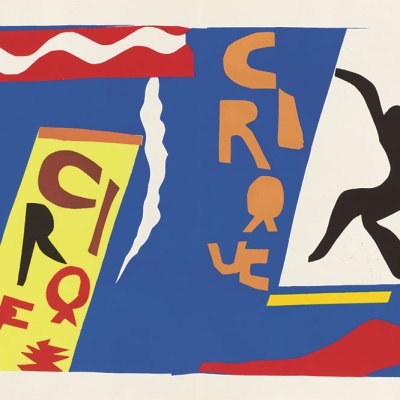Traditional Japanese decoration is probably not the first thing that comes to mind when you think of the art of Henri Matisse. But there is something similar, this show at the Baltimore Museum of Art proposes, in the ways that Matisse and a trio of Japanese woodcut specialists operating in the early 19th-century paired images of posing women with highly complex patterns. Where Matisse’s portraits tended to use European models dressed as odalisques or enslaved harem women, complete with richly textured backgrounds often inspired by fabrics from the Islamic world, the works of Kikugawa Eizan, Keisai Eisen and Utagawa Kunisada depicted female subjects – often sex workers – in public spaces in lavish attire. The exhibition is largely composed of pieces from the museum’s own collection, which includes more than 1,000 works by Matisse (2 June–5 January 2025).
Find out more from Baltimore Museum of Art’s website.
Preview below | View Apollo’s Art Diary
Geisha Standing beside the Entrance of the Umewaka Restaurant (late 1820s), Utagawa Kunisada. Baltimore Museum of Art

tanding Odalisque Reflected in a Mirror (1923), Henri Matisse. Baltimore Museum of Art. © Succession H. Matisse, Paris/Artists Rights Society (ARS), New York

Mt. Fuji from Izu Province; The Courtesan Kisegawa of the Owariya Brothel (early 1830s), Keisai Eisen. Baltimore Museum of Art

Seated Odalisque, Left Knee Bent, Ornamental Background and Checkerboard (1928), Henri Matisse. Baltimore Museum of Art. © Succession H. Matisse, Paris/Artists Rights Society (ARS), New York




